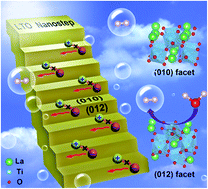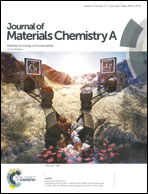Charge separation in a nanostep structured perovskite-type photocatalyst induced by successive surface heterojunctions†
Abstract
Formation of surface heterojunctions in photocatalysts through tailoring the exposed crystal facets is an efficient strategy to boost charge separation. In this work, successive surface heterojunctions with large space-charge separation were achieved in a nanostep structured La2Ti2O7 (LTO NSP) single crystal exposed periodically with (010) and (012) facets. The three-dimensional (3D) nanosteps were found to enhance the photocatalytic hydrogen generation performance 35 and 74 times, compared with LTO nanosheets and nanoparticles with the same surface area, respectively. The ultrahigh superficial charge accumulation in LTO NSP verified by surface photovoltage (SPV) measurements suggested the efficient migration of photogenerated charge carriers to the surface. Femtosecond time-resolved diffuse reflectance (TDR) spectroscopy provided direct evidence that the electrons generated from the excited sites of LTO NSP were effectively delivered to the high energy (012) facets and temporarily stored there for further reduction reactions, originating from the successive (010) and (012) surface heterojunctions.



 Please wait while we load your content...
Please wait while we load your content...